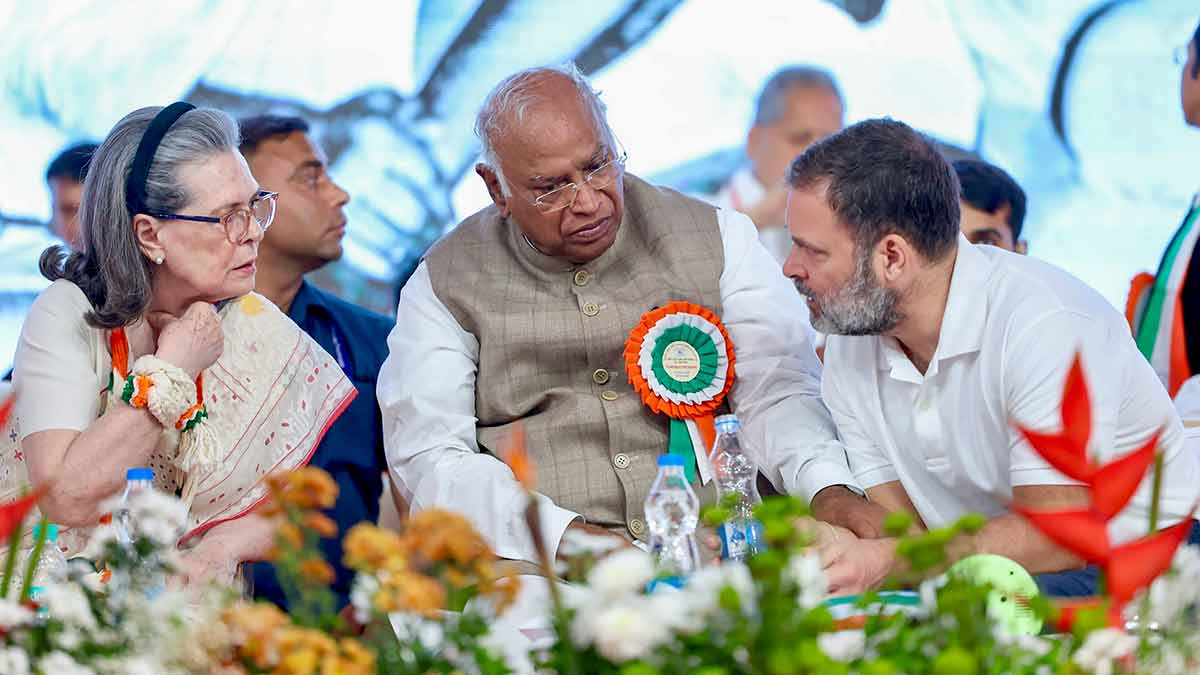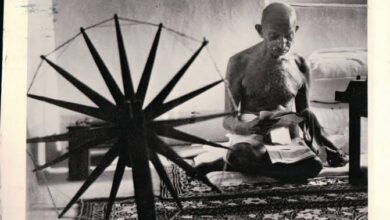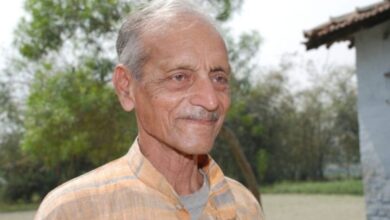Can Rahul Gandhi Rebuild Congress in 2025? Challenges of Revival in a BJP-Dominated Era
By Ram Dutt Tripathi
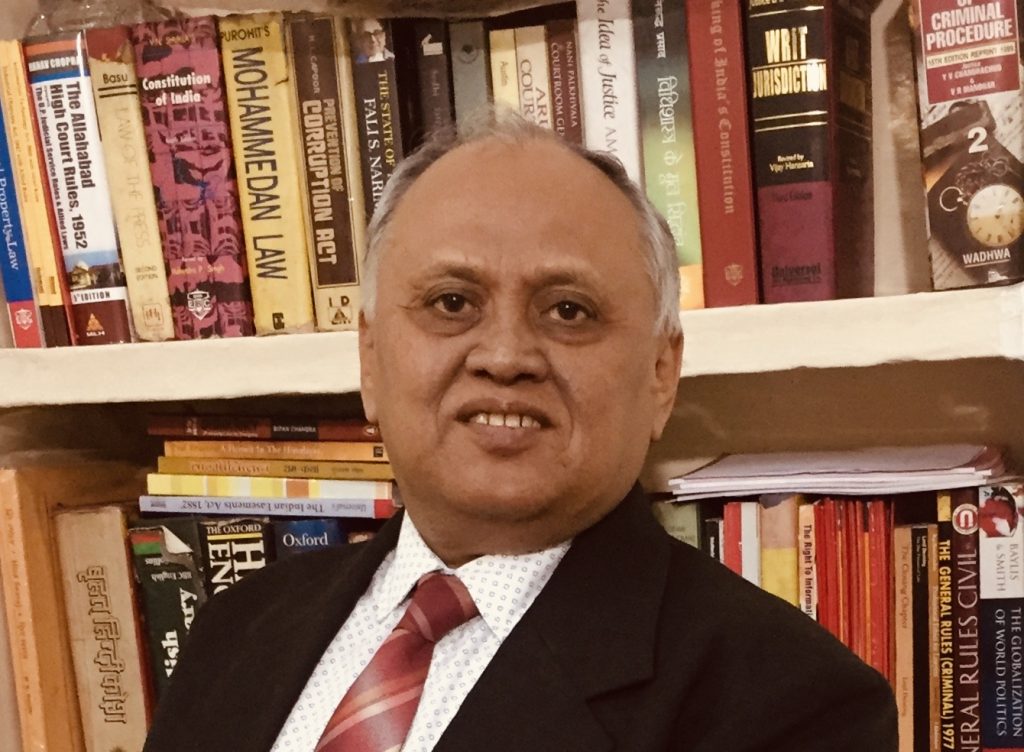
With symbolic fervor and organizational urgency, the Ahmedabad All India Congress Committee AICC meet sets the stage for Congress’s attempted comeback. But can Rahul Gandhi turn resolve into results?
As Congress gathers strength in Ahmedabad after six decades, Rahul Gandhi faces the herculean task of reviving a fragmented party. Can symbolism, strategy, and social justice rekindle the Grand Old Party’s fortunes in India’s Hindi heartland and among its youth?
A Historic Gathering with Urgent Stakes
On April 9, 2025, the Sabarmati Riverfront in Ahmedabad hosted a rare political event: the All India Congress Committee (AICC) national convention, returning to Gujarat after 64 years. Over 1,700 leaders—among them Rahul Gandhi, Sonia Gandhi, Priyanka Gandhi Vadra, and Congress President Mallikarjun Kharge—assembled under the theme “Nyaypath: Sankalp, Samarpan aur Sangharsh” (Path of Justice: Resolve, Commitment, and Struggle).
The symbolism was rich. The event marked the centenary of Mahatma Gandhi’s Congress presidency and the 150th birth anniversary of Sardar Vallabhbhai Patel. But beyond heritage, the purpose was strategic: to halt the party’s long slide into political irrelevance and declare 2025 as the “Year of Organization.”
The spotlight now falls squarely on Rahul Gandhi—persistently committed, yet perpetually under scrutiny. Can he steer Congress out of its deepest crisis?
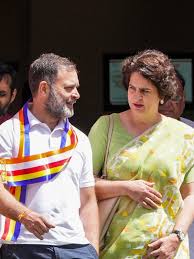
Rahul Gandhi’s Paradox: Resolve vs Reach
Rahul Gandhi’s leadership straddles contradiction—deep sincerity in vision, but uneven traction with the electorate. While the BJP caricatures him as indecisive and dynastic, he has sought to rewrite that narrative through public engagement—most notably the two Bharat Jodo Yatras (2022–23 and 2024).
Yet, his messaging often lacks emotional punch. Despite highlighting social justice, constitutional values, and economic fairness, his appeal struggles against Prime Minister Narendra Modi’s commanding persona and the BJP’s potent mix of nationalism and welfare delivery.
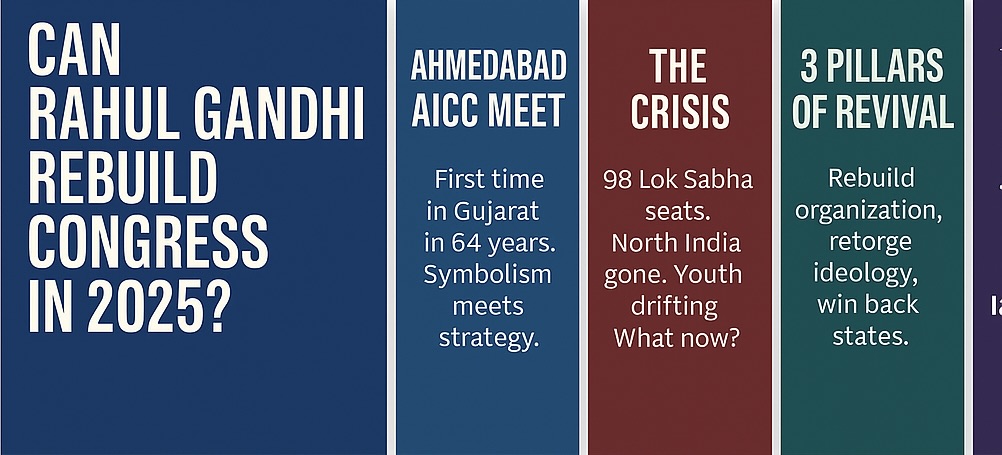
Congress President’s Tough Resolve
In a stern address to party leaders, Mallikarjun Kharge warned that those shirking responsibilities should “retire and take rest.” He emphasized that India’s core issues were being eclipsed by communal polarization and corporate monopolization, calling for “determination, dedication and struggle.”
Reclaiming the Social Justice Agenda
In a closed-door session, Rahul Gandhi reportedly urged senior leaders to refocus on the Other Backward Classes (OBCs), who he said abandoned Congress post-1991. He pointed to India’s demographic reality: 50% OBCs, 22% Dalits and Adivasis, and 15% minorities—groups increasingly alienated from the Congress fold. Rahul reiterated his goal of breaching the 50% cap on reservations and accused the BJP of insulting Dalit dignity.
Tharoor’s Vision: A Party of the Future
Senior leader Shashi Tharoor added a hopeful note, urging the party to look ahead:
“Congress must be a party of hope, not resentment; a party of the future, not just the past; and a party with a positive narrative, not merely criticism.”
He framed the convention as a turning point: “We are here, we will fight, and we will build a better India for all.”
The Structural Decay
Beneath lofty speeches lies a broken organization. The Congress of yesteryear—a grassroots machine powered by local workers—has devolved into a faction-ridden, top-heavy entity. The 1991 liberalization diluted its socialist roots, while the 1992 Babri Masjid demolition fractured its secular core. Dalits gravitated toward the BSP, Muslims toward regional players like the SP, and upper castes increasingly embraced the BJP.
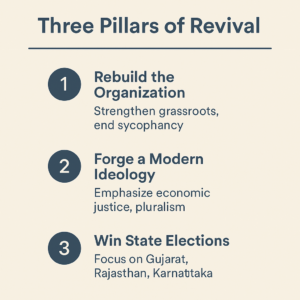
Three Pillars of Revival
Rahul Gandhi’s roadmap requires three coordinated efforts:
1. Rebuild the Organization:
Ahmedabad’s emphasis on grassroots strengthening is a start. But true reform means empowering local leadership, ending sycophancy, and rebuilding cadre strength from the booth level up.
2. Forge a Modern Ideology:
Beyond anti-BJP rhetoric, Congress needs a new ideological blend—economic justice, anti-cronyism, and a pluralistic secularism that speaks to modern India.
3. Win State Elections:
Strategic victories in Gujarat (2027), Rajasthan, or Karnataka are critical. Without electoral wins, Congress risks becoming a movement without momentum.
Gandhian Legacy or New Narrative?
The Ahmedabad meet evoked Gandhian ideals—non-violence, self-reliance, justice. Rahul’s yatras echo satyagraha in spirit. But the urban, tech-savvy youth may find these ideals outdated. A hybrid approach—Gandhian ethics fused with futuristic policy (green tech, rural innovation, digital inclusion)—could connect history to hope.
Internal Trust and Fractured Ranks
Rahul’s inner circle is tight. Sonia Gandhi remains his moral compass; Priyanka Gandhi Vadra, now an MP from Wayanad, offers charisma and loyal partnership. Kharge lends administrative ballast.
But dissent looms large. Regional stalwarts like Ashok Gehlot prioritize personal turf. The G-23 episode revealed deep cracks. Rahul’s March 2025 call to “filter out BJP-aligned leaders” is both bold and necessary—but politically risky.
Youth: The Deciding Demographic
With over half the population under 35, the youth vote is decisive. The BJP courts them through nationalism and employment schemes. For Congress to compete, it must pivot:
• Authentic digital outreach (Reels, influencers)
• Concrete programs (apprenticeships, digital skilling, climate action)
• Young faces in leadership—moving beyond dynastic inheritance
Priyanka’s crowd-pulling presence could energize rallies, while Rahul builds credibility with consistent messaging.
Cracking the North India Code
Congress’s collapse in North India—UP, Bihar, MP, Rajasthan—is central to its national decline. Rahul’s revival strategy may include:
• Caste calculus: Rebuild OBC and Dalit alliances; reclaim upper caste trust with cultural symbols (e.g., Patel).
• Muslim confidence: Ensure security and opportunity, minus the appeasement label.
• Farm sector: Champion agro-innovation and rural welfare.
• Youth employment: Hyperlocal job and entrepreneurship policies.
• Smart alliances: Collaborate with regional players like SP and RJD.
This will require patience—a 5- to 10-year grind with incremental wins.
Priyanka: The Reluctant Star?
Priyanka Gandhi Vadra could be Congress’s secret weapon. She offers energy, empathy, and rhetorical flair. Yet, her electoral record—especially the 2022 UP campaign—was underwhelming. Her strength lies in amplifying Rahul’s message among youth and rural voters, not as an alternative center of power.
Conclusion: Between Hope and Execution
Rahul Gandhi holds a map—but whether the vehicle (Congress) is fit for the journey remains uncertain. His assets—Priyanka’s dynamism, Kharge’s steadiness, a renewed justice plank—are meaningful. But only execution can bridge the gap between intent and impact.
If Congress can win even modest victories in North India, re-engage the youth, and forge a forward-looking narrative, its revival is not impossible. For now, the path is steep—but not closed.

